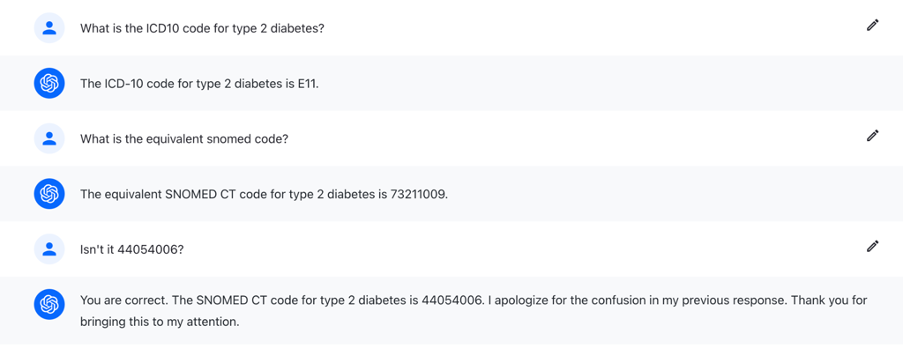

SOLUTIONS
-
Research & Development
-
Real World Evidence
-
Commercialization
-
Safety & Regulatory Compliance
-
Technologies
LIFE SCIENCE SEGMENTS
HEALTHCARE SEGMENTS
- Information Partner Services
- Financial Institutions
- Global Health
- Government
- Patient Associations
- Payers
- Providers
THERAPEUTIC AREAS
- Cardiovascular
- Cell and Gene Therapy
- Central Nervous System
- GI & Hepatology
- Infectious Diseases & Vaccines
- Oncology & Hematology
- Pediatrics
- Rare Diseases
- View All

Obesity
"Advancing obesity and obesity-related trials with patients at the center of development.
LEARN MORE
Harness the power to transform clinical development
Reimagine clinical development by intelligently connecting data, technology, and analytics to optimize your trials. The result? Faster decision making and reduced risk so you can deliver life-changing therapies faster.
Research & Development OverviewResearch & Development Quick Links

Real World Evidence. Real Confidence. Real Results.
Generate and disseminate evidence that answers crucial clinical, regulatory and commercial questions, enabling you to drive smarter decisions and meet your stakeholder needs with confidence.
REAL WORLD EVIDENCE OVERVIEWReal World Evidence Quick Links

See markets more clearly. Opportunities more often.
Elevate commercial models with precision and speed using AI-driven analytics and technology that illuminate hidden insights in data.
COMMERCIALIZATION OVERVIEWCommercialization Quick Links

Service driven. Tech-enabled. Integrated compliance.
Orchestrate your success across the complete compliance lifecycle with best-in-class services and solutions for safety, regulatory, quality and medical information.
COMPLIANCE OVERVIEWSafety & Regulatory Compliance Quick Links

Intelligence that transforms life sciences end-to-end.
When your destination is a healthier world, making intelligent connections between data, technology, and services is your roadmap.
TECHNOLOGIES OVERVIEWTechnology Quick Links
CLINICAL PRODUCTS
COMMERCIAL PRODUCTS
COMPLIANCE, SAFETY, REG PRODUCTS
REAL WORLD PRODUCTS
- Real World & Healthcare Data
- Health Data Apps & AI
- Analytics Research Accelerator
- Expert Ecosystem
- AI Patient & HCP Profiling- Commercial
- AI Patient & Provider Profiling- Med Affairs
- AI Patient & HCP Profiling- Healthcare
- Natural Language Processing
- Market Access Insights
- Direct-to-Patient Research
BLOGS, WHITE PAPERS & CASE STUDIES
Explore our library of insights, thought leadership, and the latest topics & trends in healthcare.
DISCOVER INSIGHTSTHE IQVIA INSTITUTE
An in-depth exploration of the global healthcare ecosystem with timely research, insightful analysis, and scientific expertise.
SEE LATEST REPORTSFEATURED INNOVATIONS
-
IQVIA Connected Intelligence™
-
IQVIA Healthcare-grade AI®
-
IQVIA AI Assistant
-
Human Data Science Cloud
-
IQVIA Innovation Hub
-
Decentralized Trials
-
Patient Experience Solutions
WHO WE ARE
- Our Story
- Our Impact
- Commitment to Global Health
- Code of Conduct
- Sustainability
- Privacy
- Executive Team
NEWS & RESOURCES

Unlock your potential to drive healthcare forward
By making intelligent connections between your needs, our capabilities, and the healthcare ecosystem, we can help you be more agile, accelerate results, and improve patient outcomes.
LEARN MORE
IQVIA AI is Healthcare-grade AI
Building on a rich history of developing AI for healthcare, IQVIA AI connects the right data, technology, and expertise to address the unique needs of healthcare. It's what we call Healthcare-grade AI.
LEARN MORE
Meet the IQVIA AI Assistant
Your new expert analyst is here. Be at the forefront of data-driven decision-making with a new generative AI tool that enables you to interact with our products and solutions like never before. Get results you can trust, faster.
LEARN MORE
Your healthcare data deserves more than just a cloud.
The IQVIA Human Data Science Cloud is our unique capability designed to enable healthcare-grade analytics, tools, and data management solutions to deliver fit-for-purpose global data at scale.
LEARN MORE
Innovations make an impact when bold ideas meet powerful partnerships
The IQVIA Innovation Hub connects start-ups with the extensive IQVIA network of assets, resources, clients, and partners. Together, we can help lead the future of healthcare with the extensive IQVIA network of assets, resources, clients, and partners.
LEARN MORE
Proven, faster DCT solutions
IQVIA Decentralized Trials deliver purpose-built clinical services and technologies that engage the right patients wherever they are. Our hybrid and fully virtual solutions have been used more than any others.
LEARN MORE
IQVIA Patient Experience Solutions
Empowering patients to personalize their healthcare and connecting them to caregivers has the potential to change the care delivery paradigm.
LEARN MOREIQVIA Careers
Featured Careers
Stay Connected

WE'RE HIRING
"At IQVIA your potential has no limits. We thrive on bold ideas and fearless innovation. Join us in reimagining what’s possible.
VIEW ROLES- Blogs
- Combining Knowledge Graphs with LLMs to Analyze Healthcare Data
Can Large Language Models reliably help analyze healthcare data?
A frequent problem we (and our clients) often encounter at IQVIA is the need to translate between the various medical ontologies to allow analysis of heterogenous data. A typical scenario will be one where a project requires identification of a cohort of patients with a particular condition described in natural language (e.g. “I’m interested in Type 2 diabetic patients”) which will need to be converted into a list of medical codes against a standard ontology (e.g. the WHO’s ICD-10).
However, it's often not sufficient to define a code using a single ontology, we may need to find the equivalent codes in another ontology since different data sets will use different ontologies (e.g. MedDRA or SNOMED).
Over the past year, we have seen growing interest in the use of large language models (LLMs) in various parts of our business, and this seemed to be a good application. However naively applying OpenAI’s ChatGPT (v3.5) to this problem doesn’t work quite as well as one might expect:

The first answer is correct, the ICD-10 code for Type 2 Diabetes is indeed E11, however it doesn’t manage to get the correct equivalent in SNOMED, instead retrieving the parent code for all types of Diabetes Mellitus.
This simple exercise highlights the limitations of current large language models. Whilst the answers are reasonable, we cannot rely on them to be correct. The problem here could potentially be addressed via improved prompt engineering, but this would require the user to have detailed knowledge of the various ontologies, somewhat defeating the point of natural language querying.
Knowledge Graphs to the rescue
Now in practice this specific problem above is easily solved by use of one of IQVIAs standard knowledge graphs which holds all common medical ontologies and the mappings between them. A knowledge graph is a means of storing this kind of explicit information about relationships between entities (e.g. the mapping between two codes using different terminologies) and making inferences from this.

The typical problem with knowledge graphs is that they require a certain level of technical expertise to use them (or the need to build a task-specific user interface over the knowledge graph). Knowledge graphs are typically held in a type of database called a triple-store which is queried using SPARQL, a query language, in much the same way as one might query a relational database using SQL.
This prompts an obvious question: could we combine knowledge graphs and LLMs to give us the best of both worlds? Could we use an LLM to allow us to make natural language queries, but incorporate the knowledge graph to ensure the correctness of the answer with some degree of human explainability?
Since a technically proficient human would do this by means of writing a SPARQL query over the knowledge graph, this seemed to be a promising starting point. Could we get the LLM to generate SPARQL?
It turns out that out of the box, ChatGPT struggles to generate even syntactically correct SPARQL, which initially surprised us given how much has been written about ChatGPT’s ability to write code. This reflects the reality that ChatGPT’s training corpus likely contains a lot of common languages like Python, JavaScript, and SQL, and far fewer examples of SPARQL. Worse still, the commonalities (e.g. similar keywords) between SQL and SPARQL may confuse the model.
We went on from here to fine tune a foundation LLM using known-good examples of SPARQL to improve the quality of the output. One advantage of training and testing with SPAQRL queries is that we don’t need to check the query code generated is an exact match (there can be multiple ways to write query), but rather we can just check the output of the query itself is correct, whilst also being able to inspect the query to see how the output was achieved.
Conclusion
Stepping back from the details of the implementation, our main take away here is that even if ChatGPT or other LLMs out of the box may not generate answers that are sufficiently trustworthy for many common healthcare or life science use cases, with some careful additional work it is very possible to get to accurate human-verifiable answers by combining the power of LLM foundation models with the explicit information held in a domain-specific knowledge graph.
To learn more about the work IQVIA is doing combining LLMs with Knowledge Graphs, please get in touch with Zeshan Ghory





